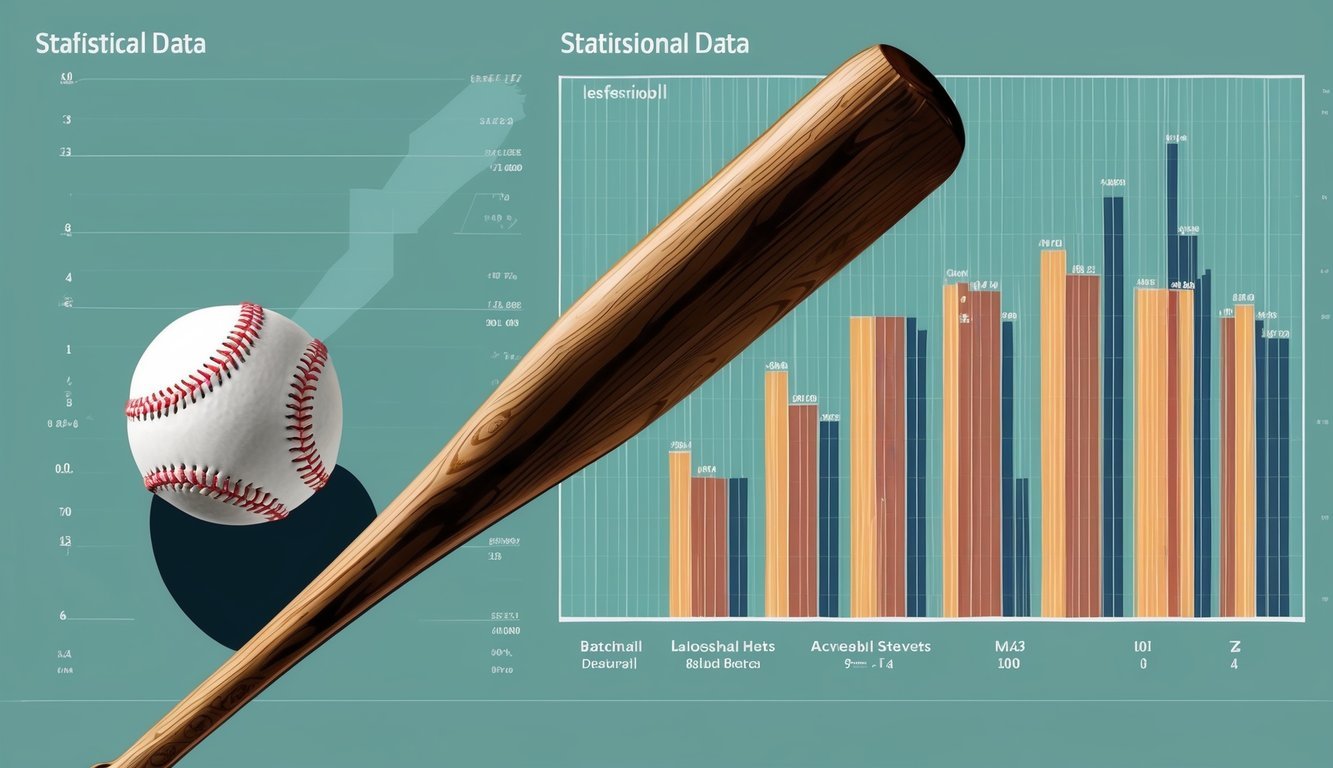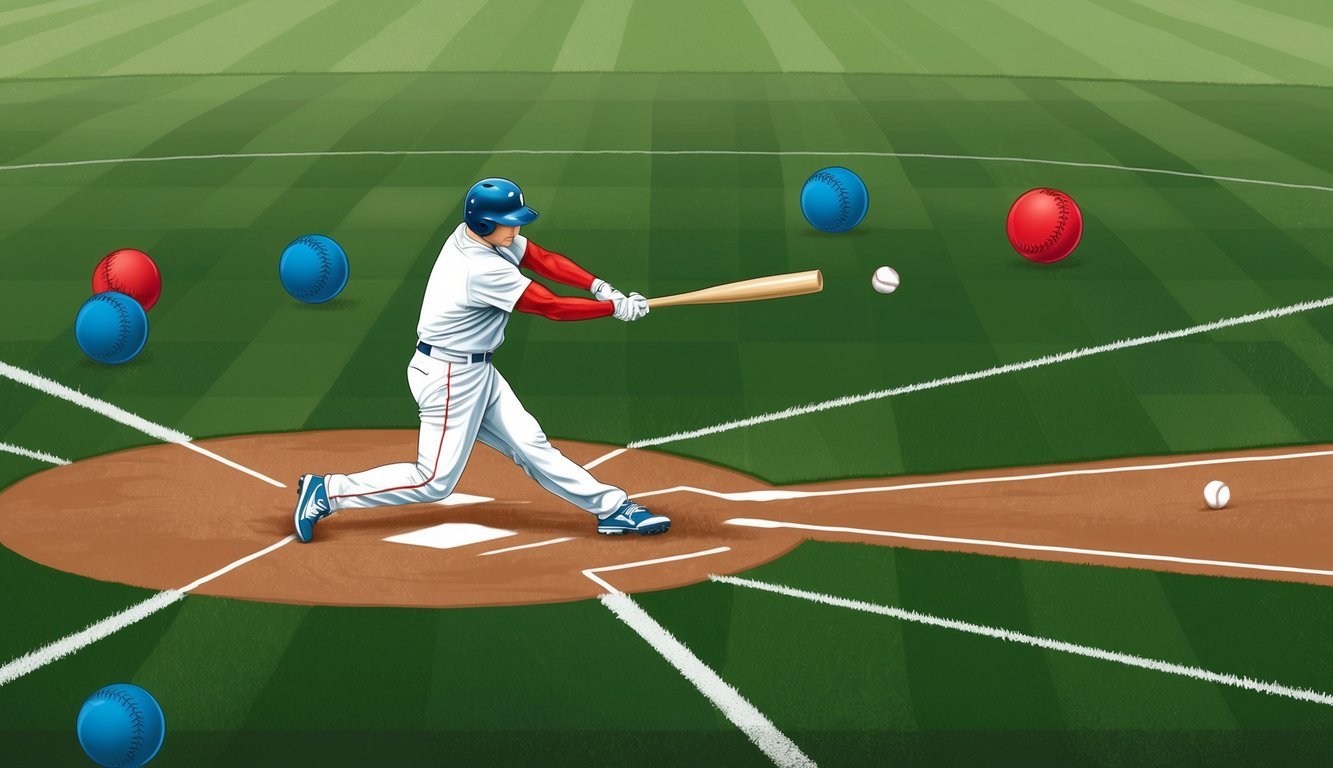Baseball enthusiasts and statisticians have long relied on batting average as a key measure of a player’s offensive performance.
This simple yet powerful statistic provides insight into a batter’s ability to successfully hit the ball and reach base.
To calculate batting average, divide the number of hits by the total number of at-bats.
For example, if a player has 32 hits in 127 at-bats, their batting average would be 0.252.
This straightforward calculation allows fans and analysts to quickly assess a player’s hitting prowess and compare it to others in the league.
While batting average doesn’t tell the whole story of a player’s contributions, it remains a fundamental statistic in evaluating offensive performance.
Understanding how to calculate and interpret batting average can enhance appreciation for the game and provide valuable insights into player effectiveness at the plate.
Understanding Batting Average
Batting average is a fundamental statistic in baseball that measures a player’s hitting effectiveness.
It provides valuable insights into a batter’s performance and has been a cornerstone of player evaluation for over a century.
Defining Batting Average
Batting average is calculated by dividing the number of hits by the number of at-bats.
The result is expressed as a three-digit decimal, typically ranging from .000 to .400.
For example, a player with 50 hits in 200 at-bats would have a batting average of .250.
To calculate:
- Count total hits
- Count total at-bats
- Divide hits by at-bats
- Round to three decimal places
A .300 average is considered excellent in Major League Baseball.
It means a player gets a hit in 30% of their at-bats.
Historical Significance
Batting average has been a key statistic since baseball’s early days.
It gained prominence in the late 19th century and quickly became a standard for measuring hitting prowess.
Some notable batting average milestones:
- .400: Last achieved by Ted Williams in 1941
- .406: Highest single-season average since 1900 (also by Williams)
- .366: Ty Cobb’s career batting average, the highest in MLB history
These numbers have become legendary in baseball lore.
They represent the pinnacle of hitting excellence and are rarely approached in modern baseball.
Key Performance Indicator for Hitters
Batting average serves as a crucial metric for evaluating hitters.
It’s often used in contract negotiations, All-Star selections, and Hall of Fame considerations.
Managers use batting average to:
- Determine lineup positions
- Make substitution decisions
- Assess player development
While other statistics like on-base percentage and slugging percentage have gained importance, batting average remains a quick, easy-to-understand measure of a player’s hitting ability.
It’s worth noting that batting average isn’t limited to baseball.
Similar concepts exist in cricket and softball, though the calculations may differ slightly.
Calculating Batting Average
Batting average is a key statistic in baseball that measures a player’s hitting performance.
It’s a simple yet powerful metric that can be easily calculated using basic math.
A player’s batting average is determined by dividing the number of hits by the number of at-bats, giving fans and analysts a clear insight into a player’s effectiveness at the plate.
However, while batting average is important, it doesn’t provide a complete picture of a player’s overall offensive contribution.
For a more comprehensive evaluation, many turn to advanced metrics, including OPS (on-base plus slugging), which combines a player’s on-base percentage and slugging percentage to assess their overall performance.
This leads to the question, “what is ops in baseball? ” and highlights its growing significance in modern analytics.
Basic Formula
The formula for batting average is:
Batting Average = Hits ÷ At-Bats
This calculation yields a three-digit decimal, typically rounded to the nearest thousandth.
For example, a player with 70 hits in 200 at-bats would have a batting average of 0.350, often written as simply .350.
Hits include singles, doubles, triples, and home runs.
At-bats exclude walks, sacrifices, and hit-by-pitches.
This ensures the average reflects a player’s ability to make contact and get on base through hitting.
Using a Calculator
Many online tools and apps offer batting average calculators for quick and easy calculations.
These calculators usually have two input fields:
- Number of Hits
- Number of At-Bats
After entering these values, the calculator instantly displays the batting average.
This can be especially helpful for tracking performance over time or comparing multiple players.
Some advanced calculators may also include fields for other statistics like on-base percentage or slugging percentage.
Examples and Scenarios
Let’s look at a few examples to better understand batting average calculations:
-
Rookie Season: A new player gets 100 hits in 400 at-bats.
Batting Average = 100 ÷ 400 = 0.250 -
All-Star Performance: An experienced player records 180 hits in 550 at-bats.
Batting Average = 180 ÷ 550 = 0.327 -
Partial Season: Due to an injury, a player only has 40 hits in 150 at-bats.
Batting Average = 40 ÷ 150 = 0.267
It’s important to note that batting averages can fluctuate dramatically early in the season when there are fewer at-bats.
As the season progresses, averages tend to stabilize.
A batting average of .300 is generally considered excellent in professional baseball.
However, the league-wide average can vary from year to year, affecting how individual performances are viewed.
Factors Affecting Batting Average

Batting average is influenced by various elements beyond a player’s skill.
These factors can significantly impact a batter’s performance and overall statistics.
Plate Appearances vs. At-Bats
Not all plate appearances count towards a player’s batting average.
At-bats exclude walks, hit-by-pitches, and sacrifices.
This distinction is crucial for understanding a player’s true hitting performance.
A batter who frequently draws walks may have fewer official at-bats.
This can lead to a higher batting average if they maintain consistent hit production.
Sacrifice bunts and sacrifice flies, while valuable for the team, don’t count against a player’s average.
On-base percentage complements batting average by including walks and hit-by-pitches.
It provides a more comprehensive view of a batter’s ability to reach base.
Hits and Types of Hits
Different types of hits contribute equally to batting average.
A single, double, triple, or home run each count as one hit in the calculation.
However, the type of hit can affect a player’s overall value:
- Singles: Most common, demonstrating consistent contact
- Doubles: Show power and ability to hit gaps
- Triples: Rare, requiring speed and favorable field conditions
- Home runs: Highest impact, directly producing runs
Players who hit for power may have lower batting averages but contribute more to scoring.
Conversely, contact hitters might have higher averages with fewer extra-base hits.
Walks and Errors
Walks and errors play unique roles in batting statistics.
Neither counts as an at-bat, potentially boosting a player’s average.
Walks:
- Don’t affect batting average
- Improve on-base percentage
- Demonstrate plate discipline
Errors:
- Don’t count as hits
- Can allow batters to reach base without impacting average
- May lead to unearned runs for the opposing team
A player reaching base on an error might seem lucky, but it doesn’t boost their hitting stats.
This distinction ensures batting average reflects a player’s true hitting ability, not defensive mistakes.
Advanced Batting Metrics

Batting average isn’t the only way to measure a hitter’s performance.
Several advanced metrics provide deeper insights into a player’s offensive contributions.
On-Base Percentage (OBP)
OBP measures how often a batter reaches base.
It includes hits, walks, and hit-by-pitches.
The formula is:
(Hits + Walks + Hit By Pitch) / (At Bats + Walks + Hit By Pitch + Sacrifice Flies)
A good OBP is typically above .340.
This metric values a player’s ability to avoid outs and get on base by any means.
It’s especially useful for evaluating leadoff hitters and table-setters in a lineup.
To calculate OBP, many fans use online calculators for quick results.
These tools are handy for comparing players or tracking performance over time.
Slugging Percentage (SLG)
SLG measures a batter’s power output.
It gives more weight to extra-base hits.
The formula is:
Total Bases / At Bats
A slugging percentage of .450 or higher is considered good.
Power hitters often have high SLG numbers.
This metric helps evaluate a player’s ability to drive in runs and create scoring opportunities.
SLG is particularly useful when comparing players with similar batting averages.
It can reveal who hits for more power, even if their average is the same.
On-Base Plus Slugging (OPS)
OPS combines OBP and SLG into a single stat.
It’s a quick way to assess a player’s overall offensive value.
The formula is simple:
OBP + SLG
An OPS of .800 or higher is generally considered good.
The highest possible OPS is 5.000, though this is practically impossible to achieve.
OPS balances a player’s ability to get on base with their power hitting.
It’s widely used in player comparisons and contract negotiations.
However, it doesn’t account for factors like ballpark effects or era adjustments.
Significant Batting Average Achievements

Batting average has long been a key measure of a hitter’s skill in baseball.
Some players have reached extraordinary heights with their hitting prowess, setting records that still stand today.
Legendary Players and Their Averages
Ted Williams stands out as one of the greatest hitters in baseball history.
His career batting average of .344 is the highest of any player in the modern era.
Williams hit an astonishing .406 in 1941, a feat unmatched since.
Ty Cobb holds the all-time record with a .366 career average.
His incredible consistency at the plate helped him achieve this mark over 24 seasons.
Babe Ruth, known for his home runs, was also an exceptional hitter for average.
He finished his career with a .342 average, ranking him among the top 10 all-time.
The Prestigious .400 Club
Hitting .400 in a single season is considered one of baseball’s most difficult achievements.
Only 20 players have accomplished this feat since 1876.
Rogers Hornsby hit over .400 three times in his career.
His highest was .424 in 1924, which remains the highest single-season average in National League history.
George Sisler batted .420 in 1922, setting the American League record.
His remarkable season included 257 hits, another AL record that stood for 84 years.
